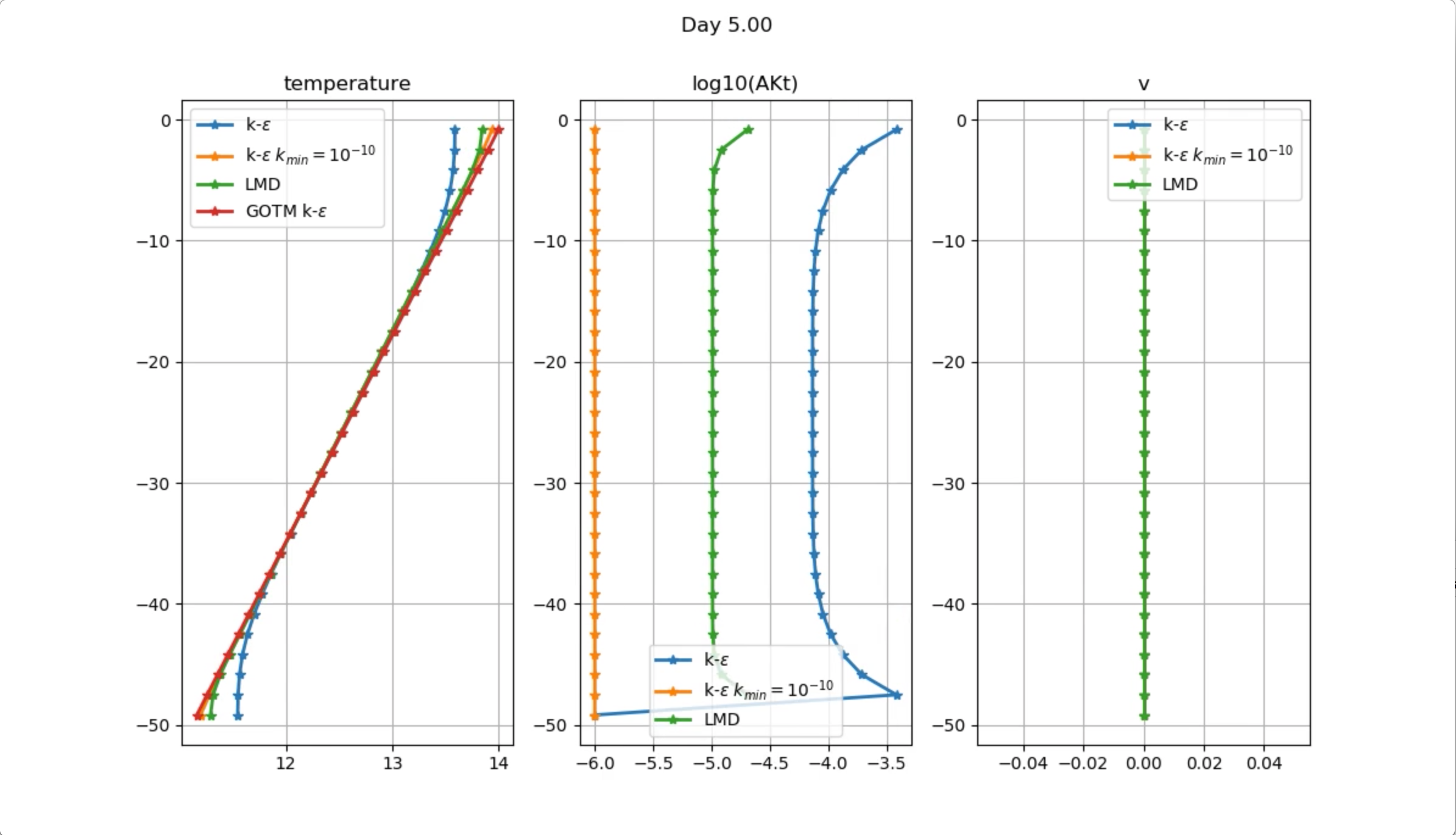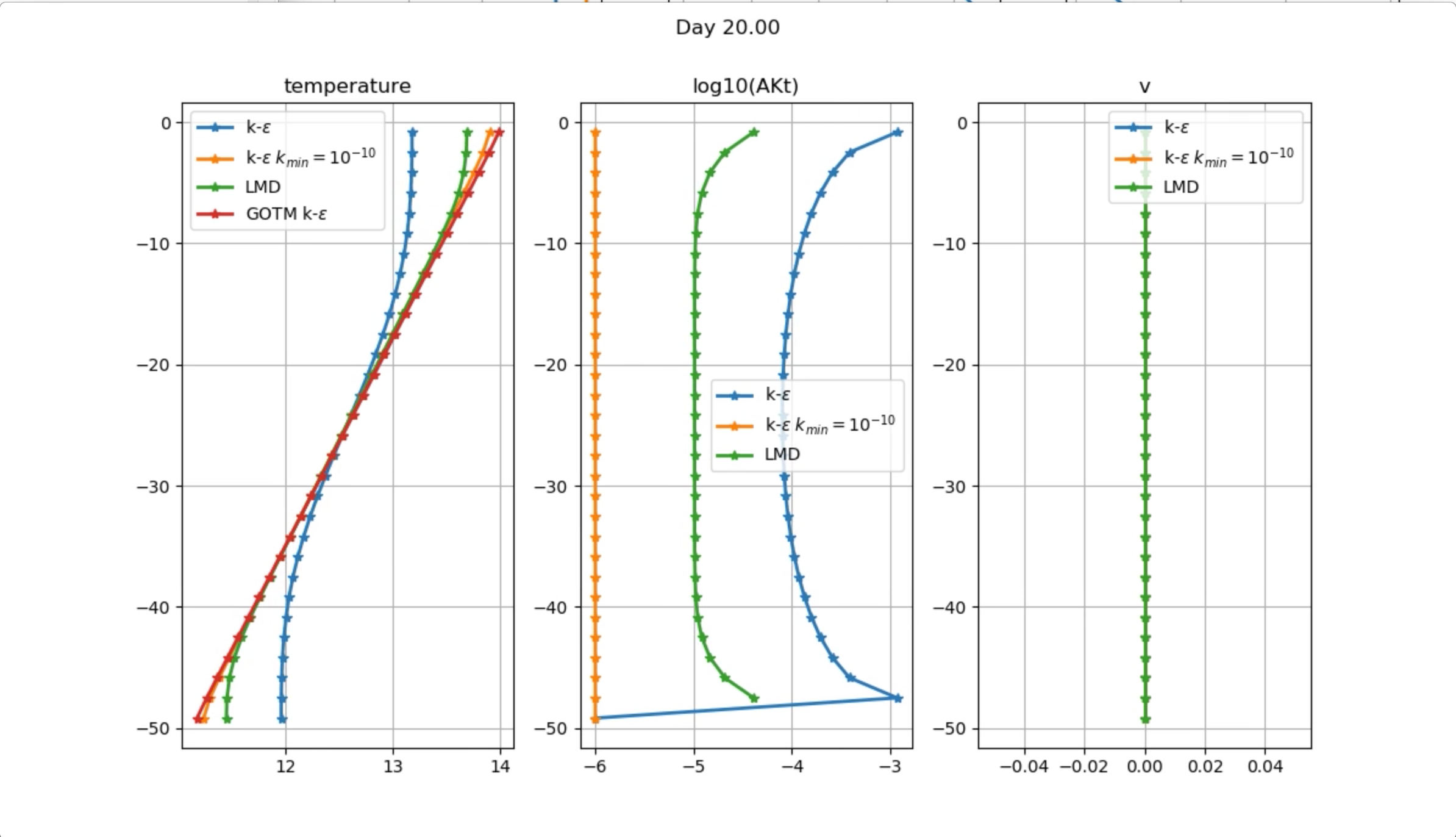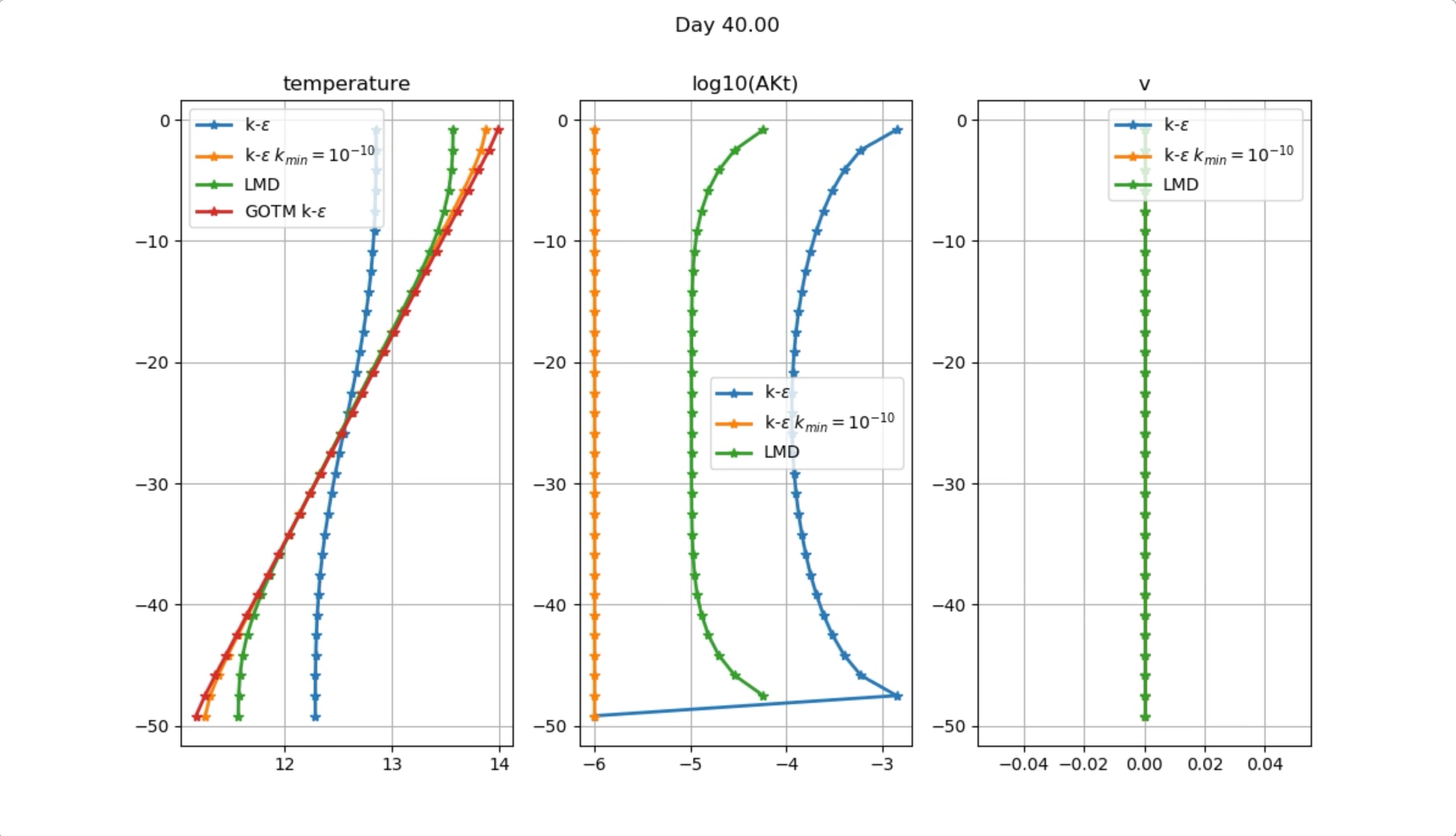I think I have stumbled across evidence of a bug in the GLS vertical mixing scheme in ROMS, at least for the k-epsilon scheme. It remains possible that I am just doing something stupid.
I find that under the k-epsilon scheme vertical stratification diffuses away much more quickly than under MY25 or LMD schemes, and faster than I would anticipate. I have also compared ROMS k-epsilon to a k-epsilon solution in GOTM, and also find that ROMS mixes away density gradients more quickly than GOTM with the same mixing scheme.
To test this, I have a run with linear equation of state and a linear innitial temperature stratification equivalent to a rho_z=-0.01 kg/m^4 in a periodic channel with no horizontal gradients in density or wind forcing; the only thing that should happen is diffusion of stratification.
I am eager to know if anyone knows of any way I could have misconfigured k-epsilon to get this excess mixing? And if not, where would one start to debug this code? Who is the expert on the GLS schemes in ROMS? This is a common scheme in coastal applications, and it would be nice to know that it is correctly implemented.
I have attached all files needed to replicate the run below; however, briefly, my three mixing schemes are activated with the following options:
Code: Select all
#define GLS_MIXING
#if defined GLS_MIXING
# undef KANTHA_CLAYSON
# define CANUTO_A
# define N2S2_HORAVG
# define RI_SPLINES
#endif
#undef MY25_MIXING
#if defined MY25_MIXING
# define KANTHA_CLAYSON
# define N2S2_HORAVG
# define RI_SPLINES
#endif
#undef LMD_MIXING
#ifdef LMD_MIXING
# define ANA_SRFLUX
# define LMD_CONVEC
# define LMD_DDMIX
# define LMD_SKPP
# define LMD_BKPP
# define LMD_NONLOCAL
# define LMD_RIMIX
#endif
Code: Select all
! Turbulent closure parameters.
AKK_BAK == 5.0d-6 ! m2/s
AKP_BAK == 5.0d-6 ! m2/s
TKENU2 == 0.0d0 ! m2/s
TKENU4 == 0.0d0 ! m4/s
! Generic length-scale turbulence closure parameters.
GLS_P == 3.0d0 ! K-epsilon
GLS_M == 1.5d0
GLS_N == -1.0d0
GLS_Kmin == 7.6d-6
GLS_Pmin == 1.0d-12
GLS_CMU0 == 0.5477d0
GLS_C1 == 1.44d0
GLS_C2 == 1.92d0
GLS_C3M == -0.4d0
GLS_C3P == 1.0d0
GLS_SIGK == 1.0d0
GLS_SIGP == 1.30d0
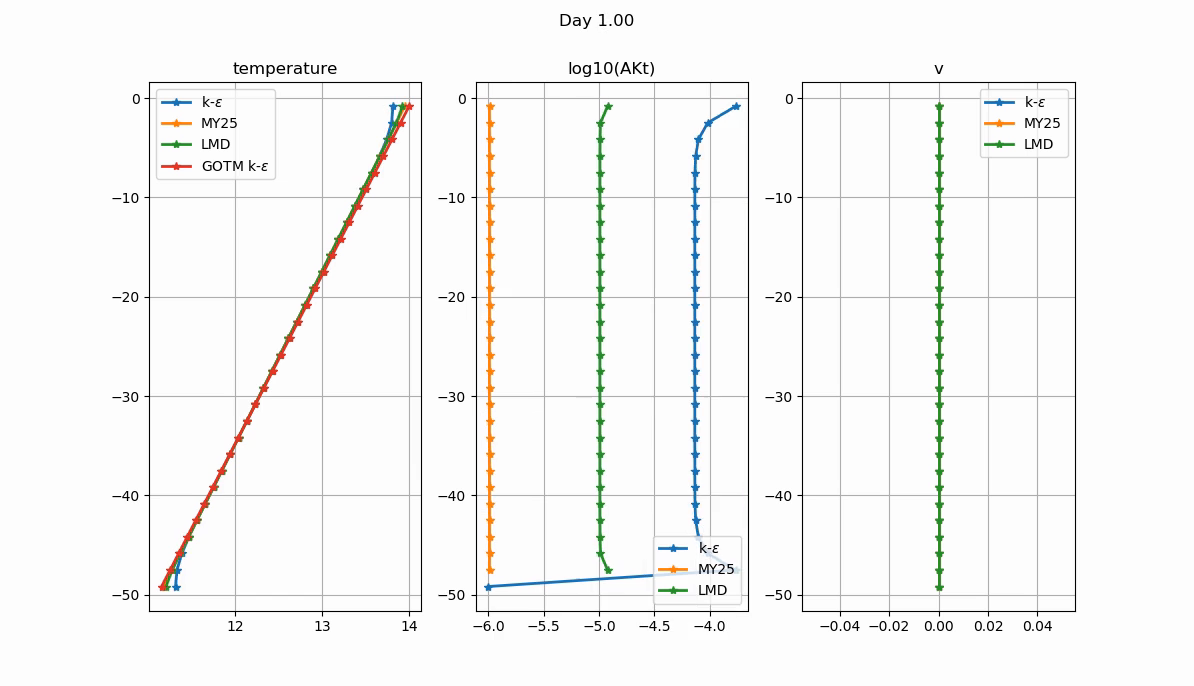
By day 45 you can see that the temperature stratification is almost gone in ROMS k-epsilon, but largely intact in all the other mixing schemes, including k-epsilon in GOTM.
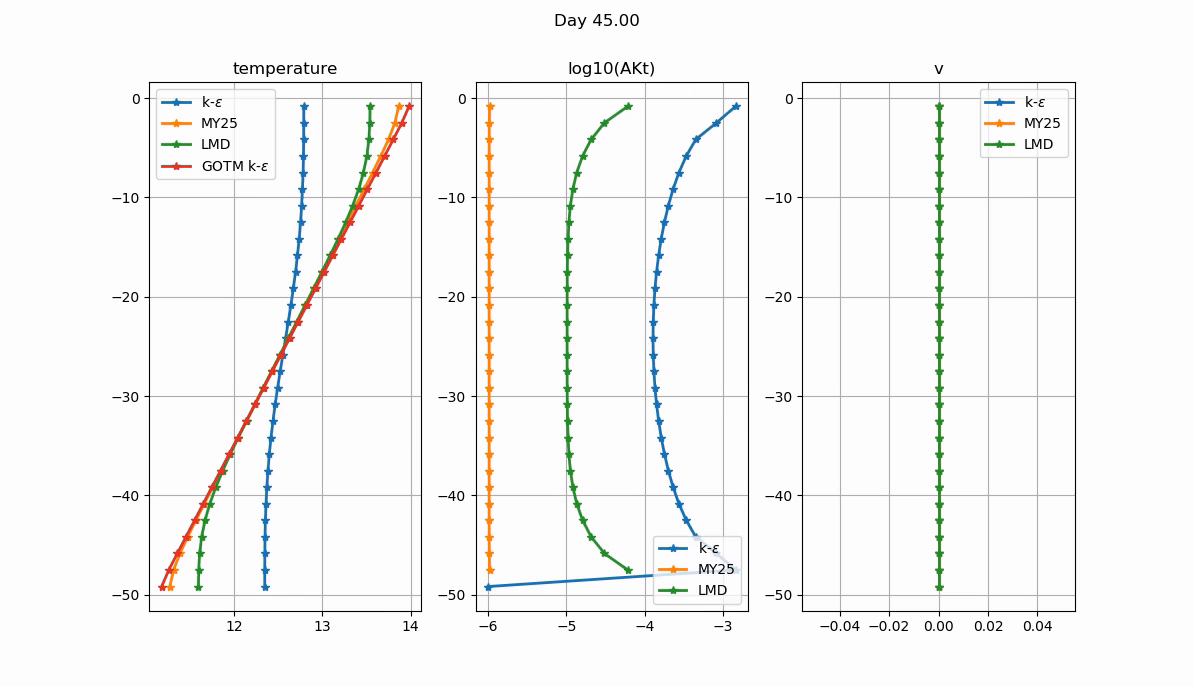
An animation of the evolution can be found at http://oxbow.sr.unh.edu/data/bump02_compareGOTM30.mp4
As I said above, I am eager to know if anyone knows of any way I could have misconfigured k-epsilon to get this excess mixing. And if not, where would one start to debug this code? Who is the expert on the GLS schemes in ROMS?
Thanks,
Jamie Pringle
